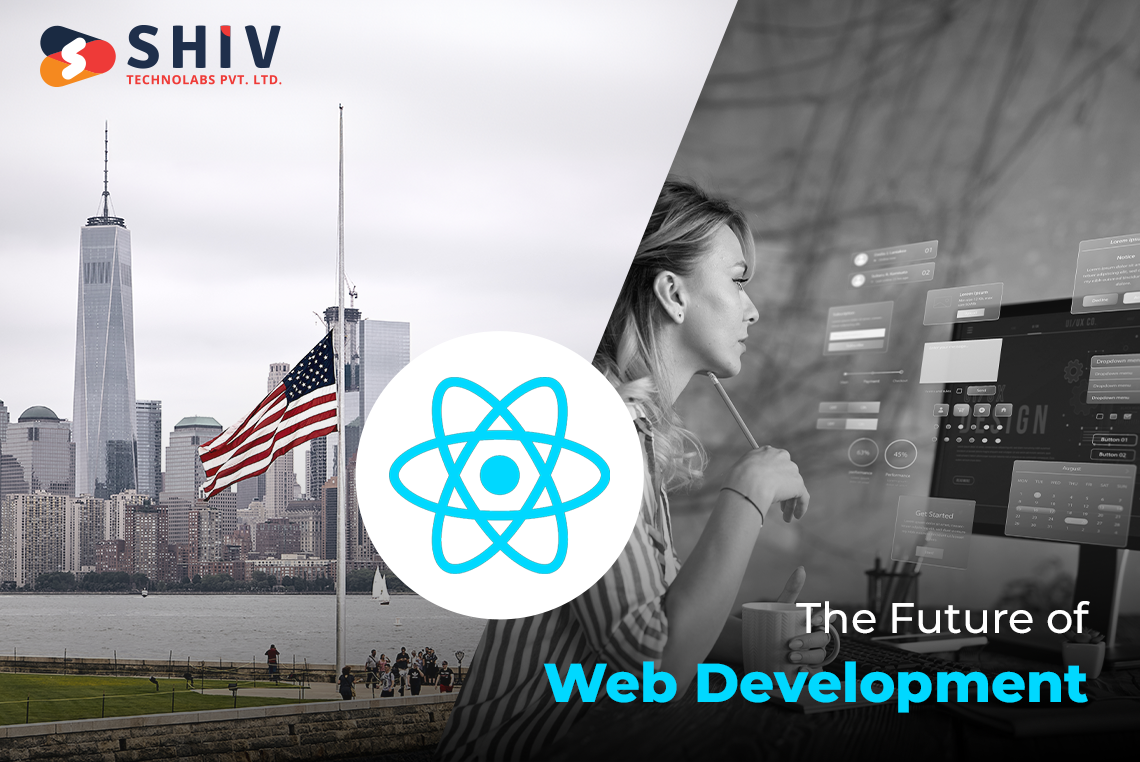Table of Contents
React.js continues to be a cornerstone in the landscape of web development, especially in USA. This comprehensive guide explores the emerging trends and technologies shaping the future of React.js, offers insightful predictions, and examines how USA-based companies are preparing for upcoming advancements.
From server-side rendering and TypeScript adoption to innovative state management solutions and micro-frontends architecture, this guide delves into the key areas driving innovation in React.js development. Whether you’re a developer or a business leader, understanding these trends is crucial for staying competitive in the rapidly evolving tech environment.
Emerging Trends and Technologies in the React.js Ecosystem
The Rise of Server-Side Rendering (SSR) and Static Site Generation (SSG)
Server-side rendering (SSR) and static site generation (SSG) are transforming how developers build React.js applications. These technologies offer significant benefits for performance and SEO, making them popular choices for modern web development.
- Exploring Next.js and Gatsby.js: Next.js and Gatsby.js are leading frameworks that bring SSR and SSG capabilities to React.js. Next.js supports both SSR and static generation, providing flexibility in how content is rendered. Gatsby.js focuses on static site generation, creating fast, pre-rendered pages that can be served quickly to users.
- Benefits for SEO and Performance: SSR and SSG improve the loading times and search engine rankings of web applications. By rendering content on the server or at build time, these methods reduce the workload on the client-side, leading to faster page loads and a better user experience.
Increased Adoption of TypeScript
TypeScript, a statically typed superset of JavaScript, is gaining popularity among React.js developers. It enhances code quality and developer productivity by catching errors at compile time and providing robust tooling support.
- TypeScript and React.js Integration: Using TypeScript with React.js helps developers catch errors early and makes code more predictable. This integration is beneficial for large codebases where maintaining type safety can prevent many runtime errors.
- Tools and Best Practices: Tools like Visual Studio Code, which has built-in support for TypeScript, are widely used. Best practices include defining types for props and state, using interfaces and type aliases, and leveraging TypeScript’s powerful type inference capabilities.
Evolution of State Management Solutions
State management in React.js has seen significant evolution, with new libraries offering more efficient ways to handle state in applications.
- From Redux to Recoil and Beyond: Redux has been a staple for state management, but newer libraries like Recoil are gaining traction. Recoil provides a simpler and more intuitive API for managing global state, reducing boilerplate code and improving developer experience.
- Choosing the Right State Management Tool: The choice of state management tool depends on the specific needs of a project. Factors to consider include the complexity of the application, ease of integration, and community support.
Predictions for the Future of React.js
Growth of Component Libraries and Design Systems
Component libraries and design systems are becoming increasingly important as developers aim for consistency and efficiency in their projects.
- Popular Component Libraries: Libraries like Material-UI and Ant Design provide a set of pre-built, customizable components that help developers create visually appealing and functional user interfaces quickly.
- Building Custom Design Systems: Many companies in USA are developing their own design systems to maintain a consistent look and feel across their applications. These systems include a library of reusable components, design guidelines, and tools for ensuring consistency.
Enhanced Developer Experience and Tooling
Improving the developer experience is a key focus area, with new tools and extensions making React.js development faster and more enjoyable.
- Advanced IDEs and Extensions: Integrated development environments (IDEs) like Visual Studio Code and extensions such as React Developer Tools are enhancing productivity. These tools provide features like syntax highlighting, code completion, and debugging support.
- AI and Machine Learning Integration: AI-powered tools are beginning to assist developers by suggesting code snippets, detecting errors, and automating repetitive tasks. This integration can significantly speed up the development process and reduce the likelihood of bugs.
Focus on Performance and Efficiency
Performance remains a critical aspect of React.js development, with new techniques emerging to build more efficient applications.
- Optimizing React.js Applications: Developers are employing various techniques to improve performance, such as code splitting, lazy loading, and memoization. These methods help reduce the initial load time and enhance the overall responsiveness of applications.
- Energy-Efficient Coding Practices: There’s a growing emphasis on writing code that consumes less energy, which is not only environmentally friendly but also beneficial for mobile users who rely on battery-powered devices.
How USA-Based Companies are Preparing for the Next Wave of React.js Advancements?
Investing in Continuous Learning and Training
To stay ahead in the rapidly evolving tech landscape, companies are prioritizing the continuous education and training of their developers.
- Upskilling Developers: Organizations are offering various programs, including workshops, online courses, and certifications, to help their teams master the latest React.js advancements. This investment in skill development is crucial for maintaining a competitive edge.
- Community Involvement and Contributions: Encouraging participation in open-source projects and attending industry events helps developers stay connected with the broader React.js community. This involvement fosters knowledge sharing and collaboration.
Embracing Micro-Frontends Architecture
Micro-frontends are gaining popularity as a way to break down monolithic frontends into smaller, more manageable pieces.
- Breaking Down Monolithic Frontends: Micro-frontends allow teams to develop, test, and deploy features independently, leading to faster release cycles and better scalability. This approach also simplifies the maintenance and updating of large applications.
- Tools and Frameworks for Micro-Frontends: Technologies like Module Federation in Webpack 5 and Single-SPA are facilitating the adoption of micro-frontends. These tools help integrate multiple micro-frontends seamlessly, providing a cohesive user experience.
Collaboration with Cloud Providers
Cloud services play a crucial role in hosting and scaling React.js applications, offering various advantages for development and deployment.
- Leveraging Cloud Services: Companies are using cloud platforms like AWS, Azure, and Google Cloud to deploy their React.js applications. These platforms provide robust infrastructure, scalability, and a range of services that enhance the development process.
- Serverless Architectures: Serverless computing, where the cloud provider manages the infrastructure, allows developers to focus on writing code without worrying about server management. This model can lead to cost savings and improved scalability.
Conclusion
The future of React.js development in USA looks promising, with emerging trends and technologies driving innovation. By staying updated with these advancements, investing in continuous learning, and adopting modern architectures and tools, companies can build powerful, efficient, and scalable applications that meet the evolving needs of users.
For businesses looking to stay ahead in the ever-evolving digital landscape, investing in expert React.js development services in USA is crucial. Shiv Technolabs offers comprehensive React.js development solutions tailored to meet the unique needs of your business. With a team of seasoned professionals, Shiv Technolabs ensures your projects are built with the latest technologies and best practices. Partner with us to leverage our expertise and take your web applications to the next level. Contact Shiv Technolabs today to learn how our React.js development services can drive your success.






















